
What Makes WPC Wall Panel Solutions Ideal for Humid Environments?

The Silent Struggle: How Humidity Wrecks Our Walls
Walk into any home or business, and you'll probably find at least one space silently battling humidity. It's in the bathroom where steam fogs mirrors and water beads on walls. It's in the kitchen, lingering after boiling pots and dishwasher cycles. It's in coastal homes, carried on salt-laden breezes, and in basements, creeping in after rainstorms. Humidity isn't just uncomfortable—it's a destructive force that turns walls from functional features into frustrating maintenance headaches. Peeling paint, warped wood, mold colonies, and crumbling drywall are all casualties of this invisible enemy. For homeowners, it means weekends spent scrubbing mold instead of relaxing. For restaurant owners, it translates to closed dining areas during repairs. For property managers, it's a never-ending cycle of costly fixes. But what if there was a wall solution that didn't just survive humidity, but thrived in it? Enter WPC wall panel solutions—a material that's changing the game for anyone tired of losing the war against moisture.
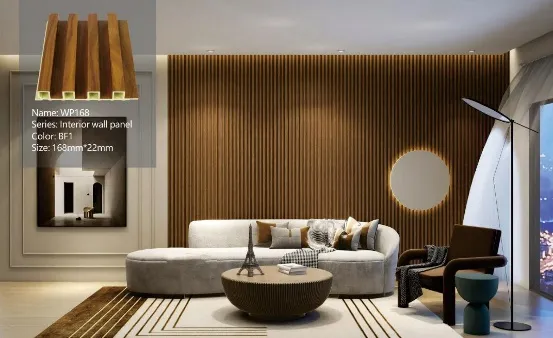
WPC Wall Panels: The Best of Both Worlds
Before diving into why they're humidity heroes, let's clarify what WPC wall panels actually are. WPC stands for Wood-Plastic Composite, a clever engineering feat that blends recycled wood fibers (think sawdust, wood chips, or lumber scraps) with plastic polymers (often recycled from bottles or packaging), plus a dash of additives for strength and longevity. The result? A material that looks and feels like natural wood but behaves like a moisture-resistant champion. Unlike solid wood, it won't absorb water. Unlike cheap plastic panels, it doesn't feel flimsy or fake. It's the sweet spot between aesthetics and performance that homeowners and businesses have been craving.
Manufacturers start by grinding wood fibers into a fine powder, then mix them with molten plastic under high heat. This fusion is pressed into panels using advanced molding techniques, creating a dense, non-porous material that can mimic oak, maple, stone, or even modern solid colors. You might recognize WPC from flooring solutions—many homeowners use WPC planks in kitchens or basements for their durability. But WPC wall panel solutions take that same rugged technology vertical, offering a seamless alternative to traditional drywall, tile, or wood panels. They're lightweight, easy to install, and customizable, making them a favorite for both DIY enthusiasts and professional contractors.
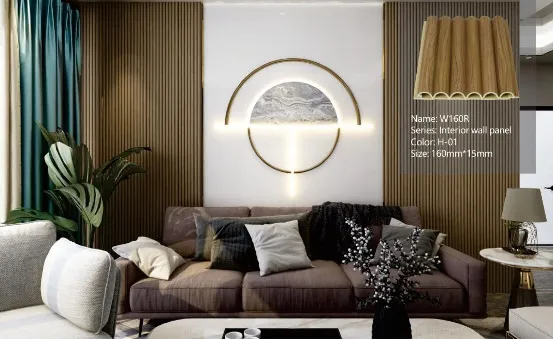
5 Reasons WPC Wall Panel Solutions Conquer Humidity
1. Moisture Resistance: The First Line of Defense
Humidity's deadliest weapon is water, and WPC wall panels are built to disarm it. Traditional materials like drywall or wood are porous—they act like sponges, soaking up moisture until they swell, warp, or rot. WPC, however, is non-porous. Its plastic component forms a waterproof barrier that repels water, while the wood fibers are sealed within this matrix, making them inaccessible to moisture. Imagine spilling a glass of water on a WPC wall: instead of seeping in, the water beads up and rolls off, leaving no trace. In bathrooms, this means no more water stains behind the shower. In kitchens, steam from boiling pasta won't seep into walls and cause mold. In coastal homes, saltwater mist can't penetrate the surface to corrode or discolor. It's a simple but revolutionary feature that turns "if" into "when" for water exposure.
2. Mold and Mildew: No Welcome Mat Here
Mold loves humidity because it provides the perfect breeding ground: moisture, organic material, and warmth. Traditional walls serve up all three on a platter—drywall's paper facing, wood's natural fibers, and even grout between tiles offer feast for mold spores. WPC wall panels? They starve mold out. Since they're moisture-resistant, there's no water for mold to thrive on. And while they contain wood fibers, those fibers are locked inside the plastic matrix, making them unavailable as food. It's like putting up a "No Vacancy" sign for mold. For families with allergies, this is life-changing. No more waking up congested because of hidden mold behind the bathroom mirror. For businesses like hotels or hospitals, where cleanliness is non-negotiable, WPC panels mean passing health inspections with ease and keeping guests safe.
3. Durability: Built to Outlast the Elements
Humidity doesn't just cause mold—it weakens materials over time. Wood warps, drywall crumbles, and even ceramic tiles can loosen when water seeps behind them. WPC wall panels, though, are built tough. The plastic-wood fusion creates a material that's resistant to dents, scratches, and impacts. Unlike wood, it doesn't expand or contract with humidity changes, so you won't see gaps between panels in summer or warped edges in winter. UV-stabilized additives mean they won't fade in sunlight, even in sunrooms or coastal properties. I spoke with a beach house owner in Florida who switched to WPC panels five years ago: "We used to replace our wooden porch walls every two years—salt air destroyed them. Now? The WPC panels still look brand new. No warping, no peeling, no maintenance beyond a quick hose-down. It's the best home improvement decision we ever made."
4. Low Maintenance: More Living, Less Scrubbing
Let's be real: no one has time for high-maintenance walls. WPC wall panel solutions get this. Unlike tile, which requires scrubbing grout lines with harsh chemicals, WPC panels have seamless joints (or no visible joints at all) that don't trap dirt or mold. A damp cloth and mild soap are all you need to wipe away grease splatters in the kitchen or toothpaste splatters in the bathroom. Forget about painting, staining, or sealing—WPC comes pre-finished, so once installed, you can enjoy it without any upkeep. For busy parents, this means more time playing with kids instead of scrubbing walls. For restaurant owners, it means kitchen staff can focus on cooking, not cleaning. Even rental property owners rave about WPC: "Tenants used to complain about moldy bathroom walls constantly. Now with WPC, maintenance requests dropped by 70%. It's saved me thousands in repairs and headaches."
5. Aesthetics: Beauty That Doesn't Compromise
Here's the kicker: WPC wall panels don't just perform—they look great. Early composite materials had a reputation for looking cheap or artificial, but modern WPC has come a long way. Today's panels mimic the texture of oak, the grain of walnut, the smoothness of stone, or the sleekness of concrete. They come in every color from warm neutrals to bold hues, and some even have 3D textures for added depth. Whether you're going for a rustic cabin vibe in a mountain home or a minimalist look in a city apartment, there's a WPC panel to match. Designers love them because they offer flexibility—you can use them on accent walls, entire rooms, or even ceilings. Homeowners love them because they add value without sacrificing style. It's the rare material that checks both the "practical" and "beautiful" boxes.
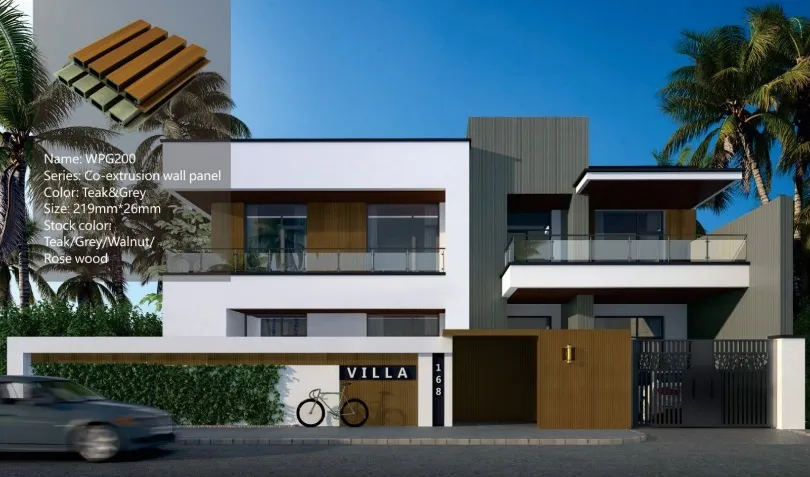
WPC vs. Traditional Materials: The Clear Winner
Still not convinced? Let's stack WPC wall panel solutions against the materials you're probably using now. The difference is night and day:
| Material | Humidity Resistance | Mold Risk | Annual Maintenance Cost | Lifespan (Humid Environments) | Aesthetic Versatility |
|---|---|---|---|---|---|
| WPC Wall Panels | Excellent (Waterproof barrier) | Very Low (No moisture/organic access) | $0–$50 (Occasional cleaning) | 20–30+ Years | High (Wood, stone, solid colors, textures) |
| Solid Wood Panels | Poor (Porous, absorbs moisture) | High (Organic fibers + moisture = mold) | $200–$500 (Staining, sealing, repairs) | 5–8 Years | Medium (Limited to wood tones/finishes) |
| Drywall + Paint | Very Poor (Paper facing dissolves in moisture) | Extremely High (Ideal mold breeding ground) | $300–$800 (Repainting, mold remediation) | 3–5 Years | Medium (Unlimited colors, but plain texture) |
| Ceramic Tiles | Good (Tiles are waterproof) | Medium (Grout lines trap moisture) | $150–$300 (Grout cleaning/resealing) | 10–15 Years (If grout maintained) | High (Patterns/colors, but cold feel) |
| PVC Panels | Good (Waterproof) | Low (Non-porous) | $50–$100 (Cleaning) | 8–12 Years (Prone to cracking/yellowing) | Low (Plastic appearance, limited textures) |
The data speaks for itself. WPC wall panel solutions outperform traditional materials in every category that matters for humid environments. They last longer, cost less to maintain, resist mold, and offer more design flexibility. For anyone tired of temporary fixes, WPC is the long-term solution.
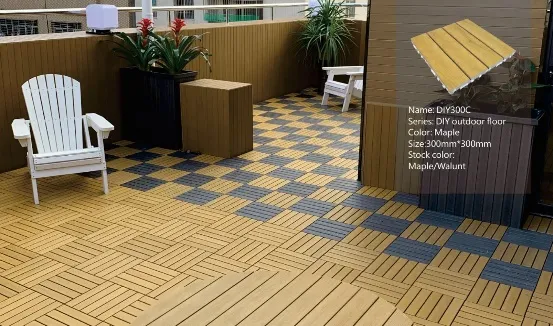
Where WPC Wall Panels Shine Brightest
WPC wall panel solutions aren't just a one-trick pony—they excel in almost any humid environment. Here are the spaces where they make the biggest difference:
Bathrooms: The Ultimate Humidity Test
Bathrooms are ground zero for humidity, with hot showers creating daily steam clouds. WPC panels here eliminate moldy grout lines, peeling wallpaper, and water-stained drywall. They're perfect for shower surrounds, backsplashes, or entire walls. Homeowners report turning their bathrooms into "spa retreats" where they no longer stress about water damage. Plus, with heat-resistant options, they stand up to even the hottest showers.
Kitchens: Heat, Steam, and Splashes Galore
Kitchens see constant moisture from boiling pots, sink splashes, and dishwashers. WPC panels near stoves resist heat, while those by sinks repel water. They're easy to wipe clean of grease and food splatters, making them a favorite for busy cooks. Restaurants love them too—commercial kitchens with WPC walls report lower cleaning costs and fewer health code violations related to mold.
Coastal and Lakeside Properties
Living by water is a dream, but saltwater mist and lake-effect humidity can turn homes into maintenance nightmares. WPC panels laugh off salt corrosion and constant moisture, making them ideal for beach houses, lake cabins, and coastal condos. They won't fade in the sun or warp in the humidity, so your vacation home stays beautiful season after season.
Basements and Laundry Rooms
Basements are prone to dampness, while laundry rooms battle humidity from dryers and washing machines. WPC panels transform these "problem spaces" into functional, livable areas. Homeowners use them to finish basements into guest rooms or home offices, knowing they won't fall victim to mold or water damage. Laundry rooms with WPC walls stay fresh, even with daily use.
Commercial Spaces: Spas, Gyms, and More
Businesses with humid environments—think spas, gyms, indoor pools, and restaurants—benefit most from WPC. Spas use them in treatment rooms for their clean, luxurious look and mold resistance. Gyms love them because they're easy to clean and stand up to sweat. Restaurants use them in kitchens and dining areas to maintain a polished appearance despite steam and spills. For businesses, WPC isn't just a wall material—it's an investment in uptime and customer satisfaction.
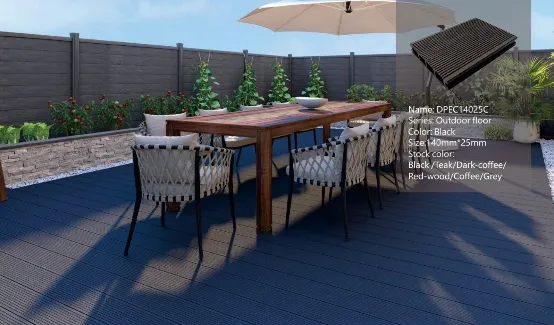
Choosing the Right WPC Wall Panel Supplier
Not all WPC wall panels are created equal, so choosing the right WPC wall panel supplier is key. Here's what to look for:
-
•
Material Quality:
Reputable suppliers use high-grade recycled wood and plastic, with a balanced ratio (usually 50-70% wood to 30-50% plastic). Avoid panels with too much wood (less moisture resistance) or too much plastic (flimsy feel).
-
•
Certifications:
Look for ISO 9001 (quality management) and GREENGUARD (low chemical emissions) certifications. These ensure the panels are safe and durable.
-
•
Product Range:
The best suppliers offer diverse styles, textures, and colors to match any design. Ask for samples to test texture and color in your space.
-
•
Warranty:
A solid warranty (10+ years) shows the supplier stands behind their product. Avoid suppliers with no warranty or vague guarantees.
-
•
Customer Reviews:
Check online reviews for feedback on durability, installation, and customer service. Real-world experiences reveal a lot about a supplier's reliability.
Sustainability: Good for Your Walls, Good for the Planet
In today's world, sustainability matters—and WPC wall panel solutions deliver here too. By using recycled wood waste and plastic, WPC reduces landfill waste and cuts down on deforestation. According to the Composite Panel Association, WPC products divert over 1.5 million tons of plastic and wood waste from landfills annually. Plus, since WPC panels last 20-30 years, they reduce the need for frequent replacements, lowering your carbon footprint over time. They're also low-VOC (volatile organic compounds), meaning they don't release harmful chemicals into your air—unlike some paints or adhesives. For eco-conscious homeowners and businesses, WPC is a choice that aligns with both practical needs and environmental values.
The Future of Humidity-Proof Walls
Humidity will always be part of our lives, but it doesn't have to control our walls. WPC wall panel solutions offer a smarter, more durable, and more stylish way to build and renovate. They're a testament to human ingenuity—taking two waste materials (wood scraps and plastic) and turning them into a humidity-fighting, mold-resistant, low-maintenance super material. Whether you're building a new home, renovating a bathroom, or upgrading a commercial space, WPC panels are the solution you've been waiting for. They're not just walls—they're peace of mind. So say goodbye to mold scrubbing, repainting, and repairs. Say hello to walls that stand strong, look beautiful, and let you focus on the things that matter most.
Ready to make the switch? Contact a trusted WPC wall panel supplier today. Request samples, ask questions, and see for yourself why WPC is revolutionizing the way we build in humid environments. Your walls (and your future self) will thank you.
Tags:
Recommend Products










